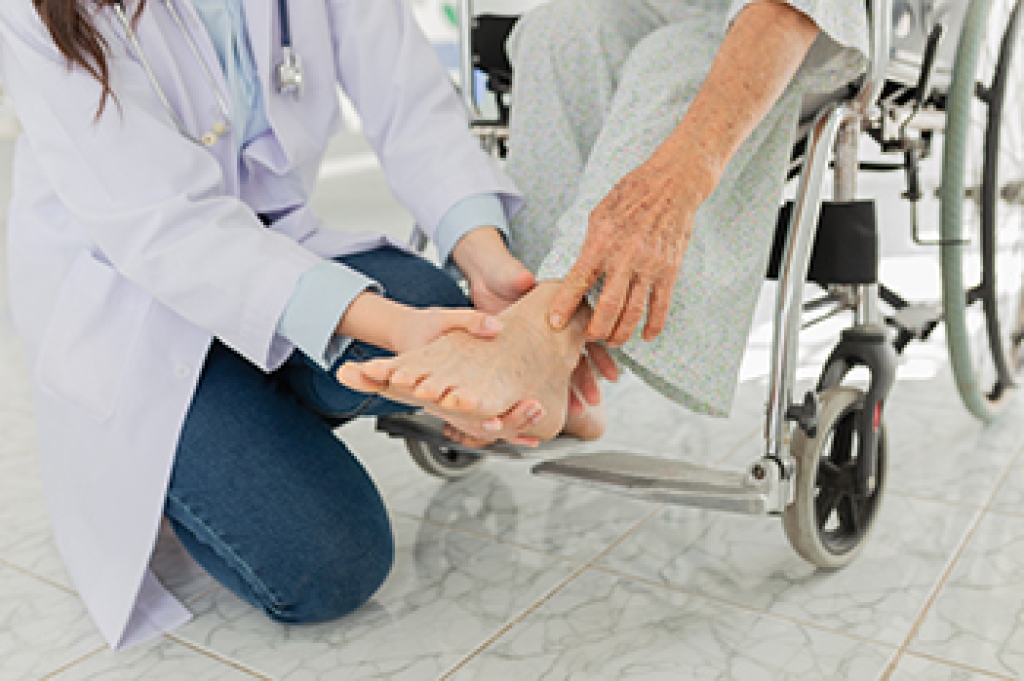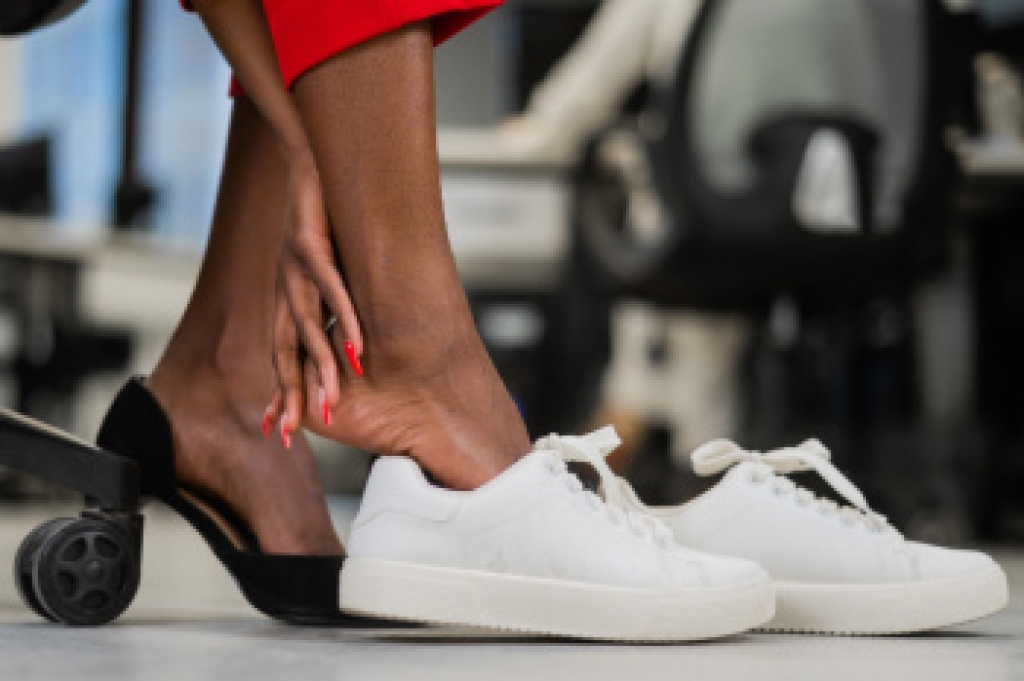Accurate Diagnosis for Painful Foot Disorders in the Elderly

Painful foot disorders are prevalent among the elderly population and can significantly impact daily life. Conditions like arthritis, plantar fasciitis, and neuropathy often cause discomfort, limiting mobility and independence. These disorders may manifest as persistent pain, swelling, or stiffness, making accurate diagnosis essential for effective treatment. Without a proper diagnosis, underlying issues may go unaddressed, leading to worsening symptoms and complications. A thorough evaluation by a chiropodist can help determine the root cause of foot pain and guide appropriate interventions. Treatment options may include orthotic devices or medication to alleviate discomfort and improve function. If you are elderly and have developed a foot condition, it is suggested that you schedule an appointment with a chiropodist who can diagnose it and offer effective treatment methods.
Foot problems can become increasingly common as we age, making everyday foot care especially important. To learn more about maintaining proper foot health, please consult with one of the chiropodists from The Footcare Centre. Our chiropodists will assess your condition and provide you with quality foot and ankle treatment.
Common Foot Problems
Certain foot problems may be more likely to affect older adults.
Some examples of foot conditions that can be common in older adults include:
- Dry, cracked skin
- Calluses and corns
- Blisters
- Ingrown toenails
- Deformities such as bunions or hammertoes
- Fungal infections
- Plantar warts
Systemic conditions, such as diabetes or arthritis, are also more likely to affect older people and manifest symptoms in the feet and ankles.
Daily Foot Care Tips
Having a daily foot care routine can help detect problems early on and prevent future issues.
Things that you can do at home to care for your feet include:
- Washing the feet daily with warm water, drying them thoroughly, and then applying a moisturizer
- Trimming the toenails straight across and not too short to prevent ingrown toenails
- Performing daily foot exercises to improve foot strength and mobility
- Wearing shoes when walking to avoid injury
- Inspecting the feet daily for any cuts, scrapes, sores, or other abnormalities and seeking prompt treatment if any problems are discovered
If you have any questions, please feel free to contact our office located in . We offer the newest diagnostic and treatment technologies for all your foot care needs.
Relief Tips for Cuboid Syndrome

Cuboid syndrome is characterized by pain and discomfort on the outer edge of the foot, often caused by a dislocation or subluxation of the cuboid bone. This condition frequently affects athletes and can result from acute injury or repetitive strain. Relief techniques for cuboid syndrome include specific therapeutic exercises such as the cuboid whip and cuboid squeeze. The cuboid whip involves gently mobilizing the cuboid bone to restore its proper position, while the cuboid squeeze helps alleviate pain by applying pressure to the area. Additionally, foot taping can support and stabilize the affected area, reducing discomfort during movement. Using orthotic inserts can also improve foot alignment and distribute pressure more evenly. If you have pain in this part of your foot, it is suggested that you contact a chiropodist who can effectively treat this condition.
Cuboid syndrome, also known as cuboid subluxation, occurs when the joint and ligaments surrounding the cuboid bone in the foot become injured. If you think that you may have cuboid syndrome, please consult with one of the chiropodists from The Footcare Centre. Our chiropodists will assess your condition and provide you with quality foot and ankle treatment.
Causes
The cuboid bone is one of the seven tarsal bones located in the foot. Cuboid syndrome develops when the cuboid bone moves down and out of alignment with the other bone (calcaneus bone) in the joint of the foot. Cuboid syndrome can be the result of a sudden injury like an ankle sprain, or it may develop slowly over time from repetitive tension through the bone and surrounding structures.
Symptoms
The most common symptom of cuboid syndrome is pain on the outside of the foot which may worsen with activity.
Other possible symptoms include:
- Difficulty bearing weight on the affected foot
- Swelling
- Sensitivity on the bottom of the foot
- Reduced range of motion
Diagnosis
A chiropodist can diagnose cuboid syndrome based on your medical history and a physical examination of the foot. Imaging studies, such as X-rays or MRIs, often fail to show the dislocated cuboid.
Treatment
Treatment often includes resting, icing, compressing and elevating the affected foot, taping, wearing orthotic inserts, and taking anti-inflammatory medications to reduce pain. The chiropodist may also be able to manipulate the dislocated bone back into alignment.
If you have any questions, please feel free to contact our office located in . We offer the newest diagnostic and treatment technologies for all your foot care needs.
Heel Pain and How to Find Relief

Heel pain is a common issue that can affect daily activities like walking or standing. One of the most frequent causes is plantar fasciitis, which occurs when the tissue connecting your heel to your toes becomes inflamed. Other causes include heel spurs, Achilles tendonitis, or overuse from activities like running or prolonged standing. To find relief, start by resting your feet and avoiding activities that worsen the pain. Wearing supportive shoes can also relieve tension in the heel. If pain persists, it is suggested that you consult a chiropodist who may recommend targeted stretches and exercises or custom orthotics, in addition to monitoring your foot health.
Heel pain is a common problem that can be caused by a variety of injuries, medical conditions, and other factors. If you suffer from heel pain, please consult with one of the chiropodists from The Footcare Centre. Our chiropodists can help you maintain the health of your lower limbs and your mobility.
When it comes to heel pain, the exact location and type of pain are important to note. Some of the conditions that may cause heel pain include:
- Plantar fasciitis - An inflammation of the ligament that runs along the bottom of the foot; it causes a stabbing pain under the heel that is at its worst when taking your first few steps after a long rest and while standing on your tiptoes or climbing stairs
- Achilles tendonitis - An inflammation of the tendon in the back of the calf; it causes pain in the back of the heel that is at its worst after resting, as well as ankle and calf stiffness, swelling, and tenderness
- Bone spurs - Bony lumps on the back of the heel bones that cause sharp pain upon first standing up; the pain becomes dull and achy over time
- Heel fractures - A break or crack in the heel bone that causes pain, swelling, and difficulty walking
- Retrocalcaneal bursitis - Swelling of the small, fluid-filled sac at the back of the heel bone; it causes pain, swelling, redness, and warmth in the back of the heel
- Tarsal tunnel syndrome - Compression of the posterior tibial nerve which causes a pins and needles sensation in the heel, foot, and calf
Your chiropodist will be able to diagnose the underlying cause of your pain and prescribe the right treatments for you. If you have any questions, please feel free to contact our office located in . We offer the newest diagnostic and treatment technologies for all your foot care needs.


